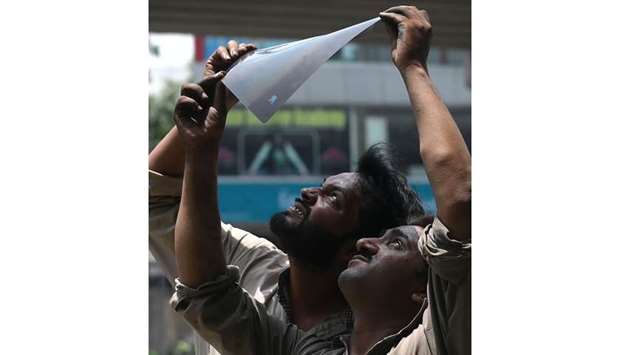The year’s first solar eclipse was witnessed across Pakistan.
According to the advisory of ministry of science and technology, it was not safe to look directly at the sun during the eclipse as it can seriously damage retina of eyes.
In Sukkur, the sun was hidden the most – 98.78% – at 11.07am.
It was followed by Gwadar, where the moon covered 97% of the sun by 10.48am.
The eclipse was also visible in Islamabad from 9.50am to 1.36pm (peaking at 11.25am), in Karachi from 9.26am to 12.46pm (peaking at 10.59am), in Lahore from 9.48am to 1.10pm (peaking at 11.26am), in Peshawar from 9.48am to 1.02pm (peak at 11.21am), in Quetta from 9.35am to 12.49pm (peaking at 11.06am), in Gilgit from 9.56am to 1.08pm (peaking at 11.30am), and in Muzaffarabad from 9.52am to 1.07pm (peaking at 11.26am).
The annular eclipse was also seen in many other countries.
“An annular solar eclipse occurs when the moon covers the sun’s centre, leaving the sun’s outer edges to form a ‘ring of fire’, or annulus, around the moon,” said Nadeem Faisal, who heads the Met department’s climate data processing centre.
This is the first of the two solar eclipses this year.
The second eclipse will occur on December 14, but it will not be visible in Pakistan.
Federal Science and Technology Minister Fawad Chaudhry had cautioned the public against looking directly at the eclipse as it can damage the eyes.

Two men in Lahore share an X-ray sheet to observe the annular solar eclipse.


